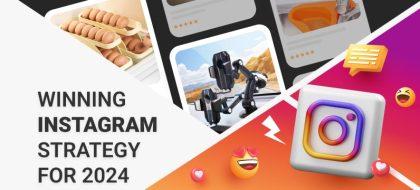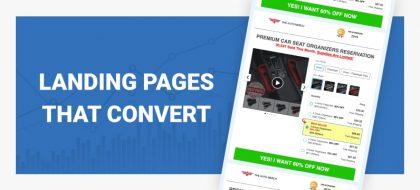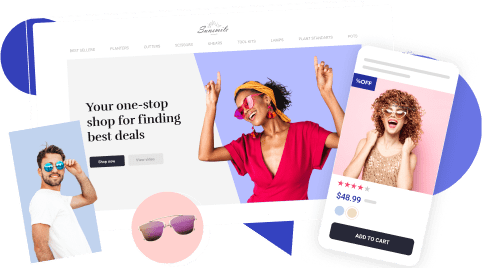Split Test Ideas: How To Turn Your Product Page Into A Revenue Machine With The Split Test Add-On

What are the best split test ideas to explore when you’re running an online store? Let’s discuss the most promising options!
When it comes to products, there’s no such a thing as universally acknowledged role models.
Some people tend to rely on their experience, personal preferences, or intuition when they need to decide what products to sell on their websites. Acting on a hunch is more like flipping a coin: you never know what you’re going to end up with.
Some entrepreneurs prefer to follow somebody else’s example. But what works for other stores might turn out to be a dud for you and vice versa. As a business owner, you have to take into account a number of factors such as niche, audience, season, etc.
Others are more inclined to plunge into painstaking never-ending niche research gleaning insignificant details and putting off the store launch. This procrastination can last forever.
Great news: nobody forces you to follow these scenarios. We’re strongly convinced that your best bet is to work out your own success ingredients to be able to take the lead. Here’s how you can handle uncertainty and sail through.
Why experiment with split test ideas?
Split testing has proven to be one of the most effective ways to test-market ideas and get more happy customers. Essentially, split testing is an experiment you can run between two or more variants of a page. With its help, you learn which one converts the best and work out that perfect combination of images, titles, descriptions, prices, and more.
Thanks to the Split Test add-on and its powerful built-in reporting feature, validating product hypotheses and making data-driven improvements has never been that easy (and enjoyable!).
The add-on will help you identify your top-selling products by showing two (or more) versions of the same product page to different customers. You’ll get solid data to act on instead of relying on your gut feeling. Feel free to check our in-depth guide on this new tool here.
Top split test ideas to explore: what to change on your product page?
We’ve put together a list of product elements you’ll definitely want to split test to outperform your competitors. Don’t underestimate minor tweaks – they can lead to great results and generate significant revenue gains.
Product title
Worried that your product title might sound a bit dry and boring? Spice it up adding a fancy epithet, why not? Emphasizing product value by using such words as ‘premium’ or ‘exclusive’ might also win you some customers. Try going into more details and make your product title more descriptive to see what effect it has on your purchasing behavior.
Headlines
Change the wording a bit, make it more personal, more benefit-oriented, longer or shorter, etc. See what emotions – negative or positive – encourage more conversions. Try out different unique selling points to understand which one has a bigger impact and really drives home your value proposition. Here is another idea: make a customer review part of your headline or ask a question.
Value proposition
To put it simply, this prop is what value you promise to deliver to customers if they buy from you and how you motivate them to choose your brand. Strong value proposition should be kept to-the-point and pain-focused. No idea where to start? Play up your exclusive competitive advantages and try converting your product features into benefits. For this purpose, identify what problems your product solves and how it can make your customer’s life better / easier / safer / healthier.
Frequently asked questions
Buying from an online store you’ve never heard of before might arouse some certain discomfort. The FAQs section is where you can publicly address common questions about your product and business in general, alleviate purchasing anxieties, and build trust with your prospects. Create a list of possible concerns and objections your potential customers might have and craft detailed answers. Consider adding images or videos and experiment with copy length and tone to figure out the perfect FAQs recipe.
Images
Add, remove, or replace images at your choice. Images that offer an up-close view of the product are highly appreciated. Consider comparing professional-looking product images with customer-focused ones: add photos showing your happy customers using the product.
Also, you might want to test out colors used in images as they heavily affect not only the way we respond to visuals but also how we perceive a brand in general.
Video
No doubt you already know that videos have proven to be huge conversion boosters and people are far more likely to make a purchase after watching a product video. Consider adding a video explainer to your product description if you don’t already have one or try shooting your own! It will elaborate on the value propositions of the product and save space on the page. Another idea worth considering is to compare video thumbnails. It takes only a couple of clicks to replace a thumbnail, but the results can be surprising.
Product descriptions and copy
You can experiment with content depth, test longer descriptions against brief and easy-to-digest product details. Tell your personal story to inspire empathy with your customers! Or, you can compare product description design: try testing paragraph copy against bullet points, add emojis or funny icons for a casual look. That’s where you can get creative!
Prices
Pricing is hands down tricky. With split testing, you can try out different pricing strategies, adjust discount values, price rounding, etc. You’ll learn how much your product should cost so that your customers feel like they’re losing money if they don’t buy this item from you.
Shipping
Consider testing free shipping against paid shipping. For example, you can pair marked up prices with free shipping to offset the potential negative effect of raising product prices. Or maybe the ‘free plus shipping’ offers will do wonders to your business. You’ll never know unless you try!
Scarcity and urgency
Play around with the ‘Only XX left in stock!’ element to see which stock level does a better job of encouraging FOMO (Fear Of Missing Out).
Social proof
Use the power of testimonials to help your prospects validate their choice and make purchase decisions faster. You can test practically anything here – number of reviews, review body, average rating, customer photos, country flags. Choose convincing reviews that touch on the product’s benefits to lift your brand’s credibility.
Trust badges and payment icons
People tend to feel more confident giving their personal information when they see they can trust you. Nobody wants to fall victim to online fraud. In product description, switch between different reputable transaction-safe logos and confidence-inspiring badges to find those that work best for you.
Return policy
The importance of a favorable return and refund policy shouldn’t be underestimated: it can help reduce uncertainty, attract new customers, and retain existing ones. That’s why we highly recommend that you put some extra thought into your approach to returns, exchanges, and warranties. Here’s where you can take your return policy to a whole different level and make it your unique selling point. It’s no secret that sometimes a money-back and/or satisfaction guarantee badge on your product page can be a deciding factor in the purchase decision.
The most incredible thing about these testing ideas is that you can implement them yourself in no time. The Split Test add-on is the definitive testing solution that will save you the trouble of hiring a developer to adjust one thing and remove another. Once you get some zero-effort tests under your belt and unlock valuable insights about visitor behavior, you’ll likely want to keep testing to implement step-by-step improvements.
⚡ PRO TIP⚡
We recommend documenting test details – your hypothesis, product information, and test outcomes. You can do this either in the Test Description field in your test settings or in your notebook. Storing these summaries will not only help keep track of results and avoid repeating mistakes, but also will encourage critical thinking and train your intuition. Over time, it will become easier to come up with winning testing ideas.
Before launching a test decide what you want to test, why and what outcomes you expect to see when your test ends. Keep this simple formula in mind when creating a hypothesis:
Changing (the element you want to test) from ___________ to ___________ will increase/decrease (metric).
For example, your hypothesis might sound like this:
‘Replacing a professional image with a photo of a happy customer using my product will result in a 20% increase in sales’
Or like this:
‘Adding money-back guarantee badge to the description area will decrease checkout abandonment rate’
Nothing fancy, just your prediction. After all, isn’t it nice to have a well-structured vision, is it?
Although you can completely transform your product variant, we recommend testing one change at a time so that you can easily identify which modification affected product performance.
For example, if you change product title, re-write description, edit pricing formula, add more customer photos, and replace product images at the same time, you’ll have hard time understanding what exactly caused that rise in sales.
Let’s be honest: you are not your product’s target customer. And even your friends and family aren’t. They’re simply too biased to share impartial opinions. So, wouldn’t it be wiser to listen to people who actually buy from your store?
Customers themselves can show you what they need. Let us help you put products to work for you and turn “just looking” into buying. Just imagine the huge difference you can make with these split test ideas and a handy tool at hand!















